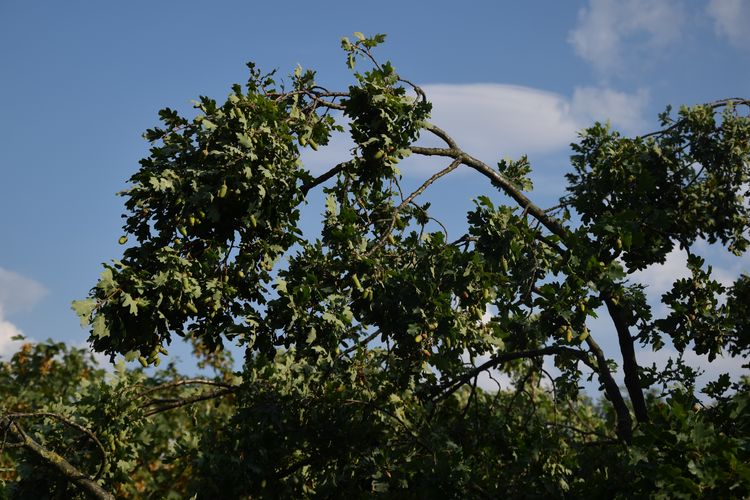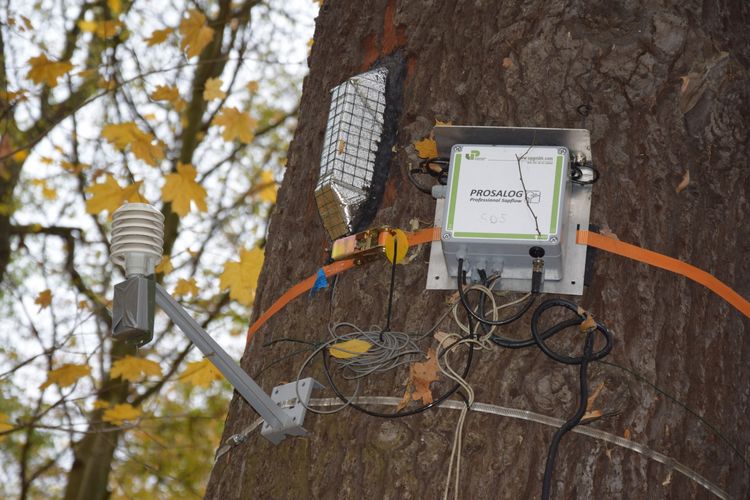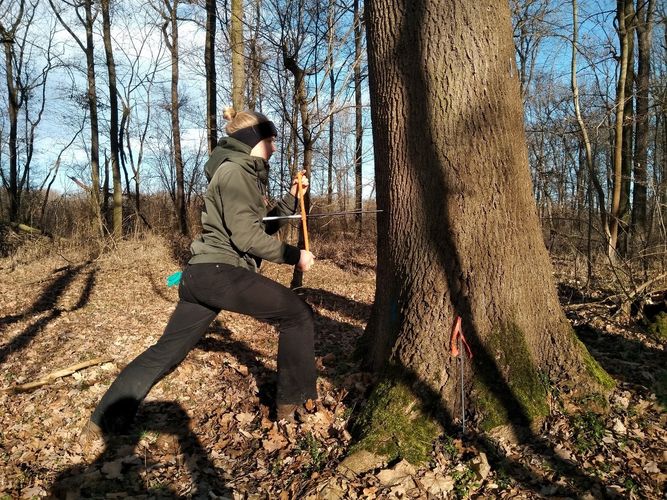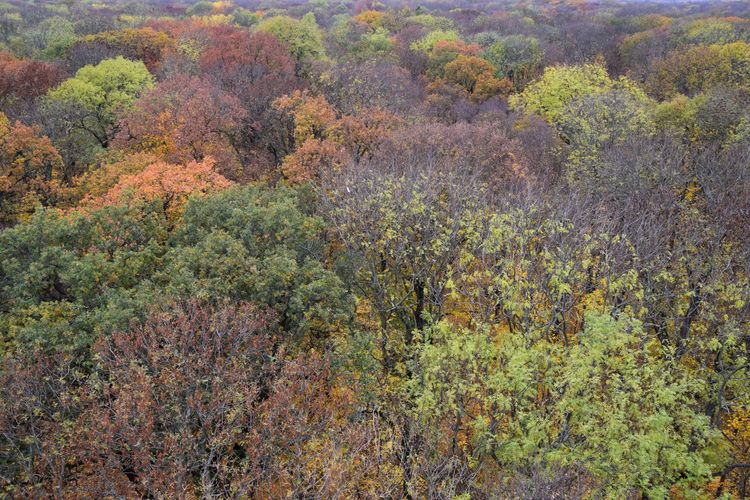Compared to previous drought years in Central Europe, 2018 was not only extremely dry but also unusually hot. This phenomenon, known as a ‘hotter drought’, was followed by a second hotter drought year in 2019. Individual drought years occur regularly, but two consecutive, extremely hot and dry years had not yet been observed at our latitudes. However, due to climate change, such extreme events will occur more frequently in the future.
The double drought caused unprecedented forest damage throughout Central Europe. In Germany, an average of one out of every forty trees died. The Leipzig floodplain forest was also affected, with many of the already damaged trees dying off. The cumulative drought stress also had a negative impact on the healthy trees; their growth declined and they exhibited stress responses never observed before. This has now been shown by a research team from iDiv, Leipzig University, the Helmholtz Centre for Environmental Research - UFZ, the University of Freiburg and the Max Planck Institute for Biogeochemistry. They compared drought stress effects for the tree species oak, ash and maple in previous drought years - 2003, 2006 and 2015 – with the effects in the hotter drought years 2018/19. The team found that healthy trees could partially compensate for a lack of water in single drought years, but were unable to cope with two consecutive drought years. The probable reason: The trees' starch reserves were running out, and their hydraulic system became increasingly damaged.
"You could imagine that when floodplain forests are faced with drought, they are better able to cope with it, compared to naturally drier sites. But that was not enough. Two drought years in a row have already led to severe drought stress," said lead author Florian Schnabel, scientist at iDiv and Leipzig University. "If such extreme events occur more frequently in the future, we’ll get closer to a tipping point even in comparably water-rich forests."
The year 2018 did not yet induce exceptional stress responses or decreases in growth for oak and maple. In 2019, however, all of the tree species examined exhibited unprecedented signs of stress. All species reacted more severely in the second hotter drought year than in previous years of drought – a consequence of accumulated, sustained damage by drought stress.
The researchers measured the trees’ stress levels on the basis of their annual growth rings and the composition of the carbon in them, the so-called isotope ratio. They then compared the values in drought years with those of climatically normal years. The annual rings were examined using wood core samples. The cores allowed the scientists to ‘go back in time’ and study the trees’ response to droughts of the past.
"Our research helps to predict the reactions of tree species and forests to this new type of climate phenomenon," said Prof Christian Wirth, senior author of the study, research group leader at iDiv and Leipzig University, and fellow at the Max Planck Institute for Biogeochemistry. "What we can already see is disturbing; consecutive periods of hotter drought pose a new threat to forests under climate change. Floodplain forests should actually be able to cope with drought. The fact that the Leipzig floodplain forest reacts so severely is the result of decades of drainage, and a warning signal. Without a revitalisation of floodplain dynamics, with regular flooding and a raising of the groundwater level, the floodplain forest is defenceless against climate change."
Original publication:
(Scientists with iDiv affiliation bold)
Schnabel, F., Purrucker, S., Schmitt, L., Engelmann, R. A., Kahl, A., Richter, R., Seele-Dilbat, C., Skiadaresis, G., & Wirth, C. (2021). Cumulative growth and stress responses to the 2018–2019 drought in a European floodplain forest. Global Change Biology, 00, 1–14. https://onlinelibrary.wiley.com/doi/10.1111/gcb.16028


































































